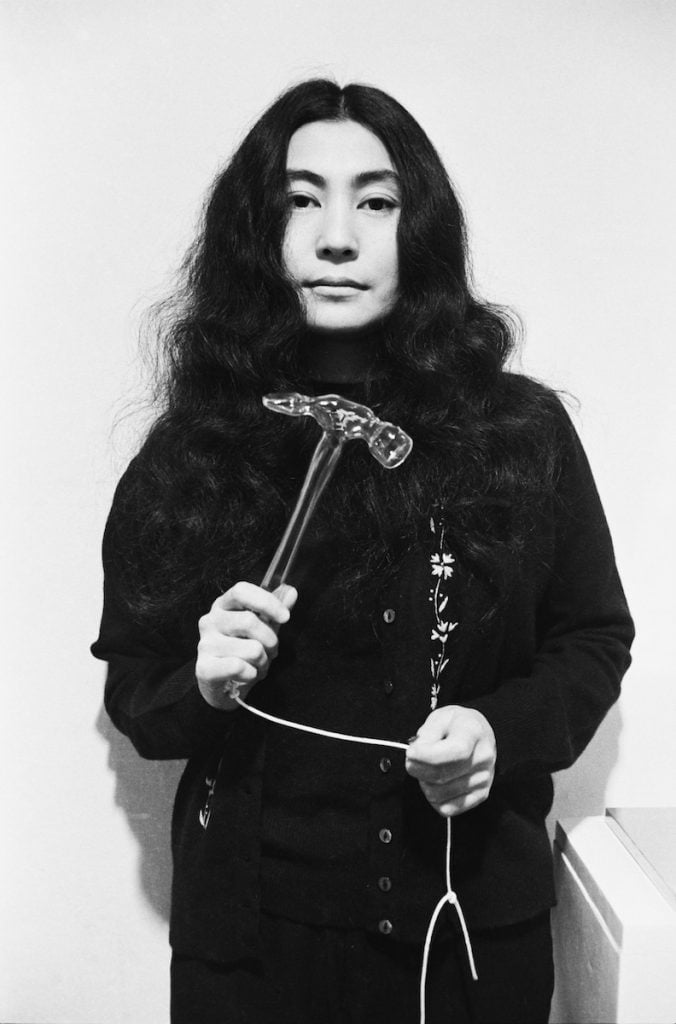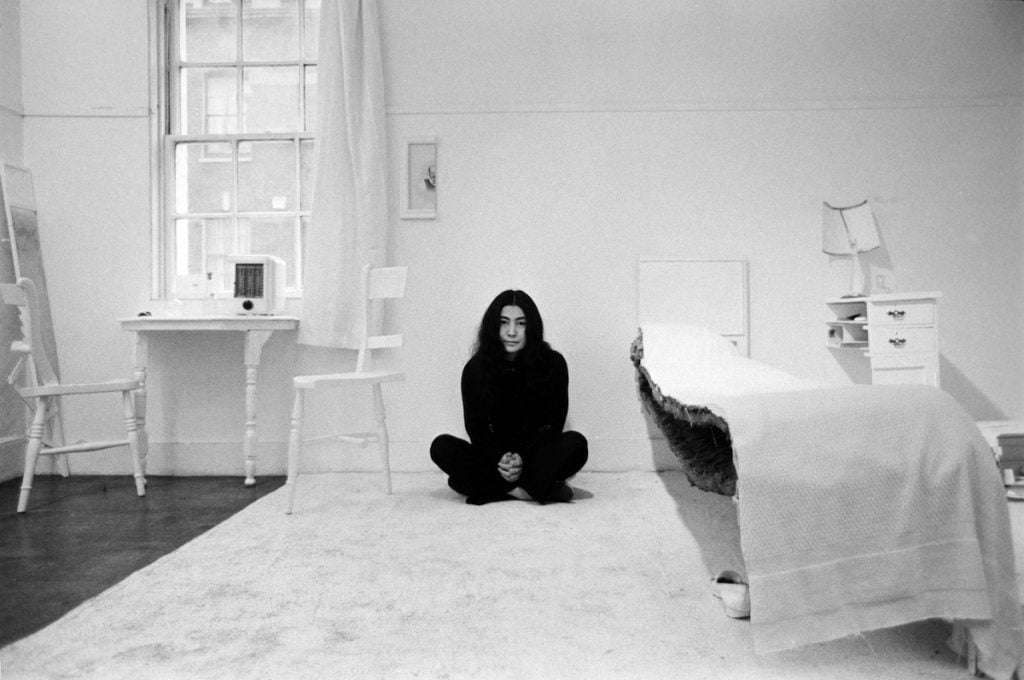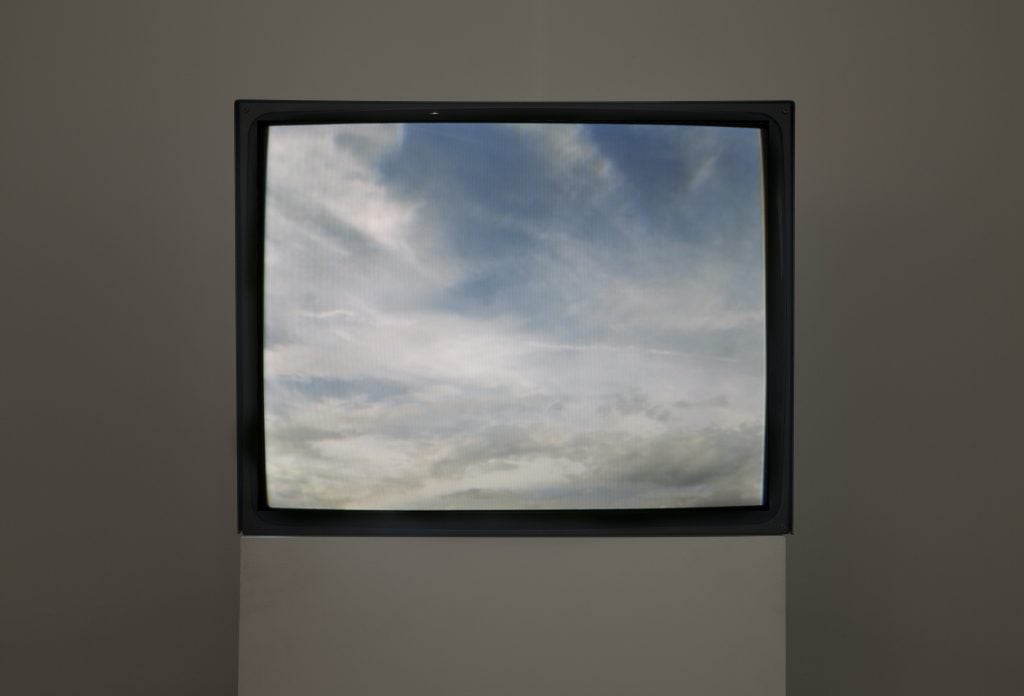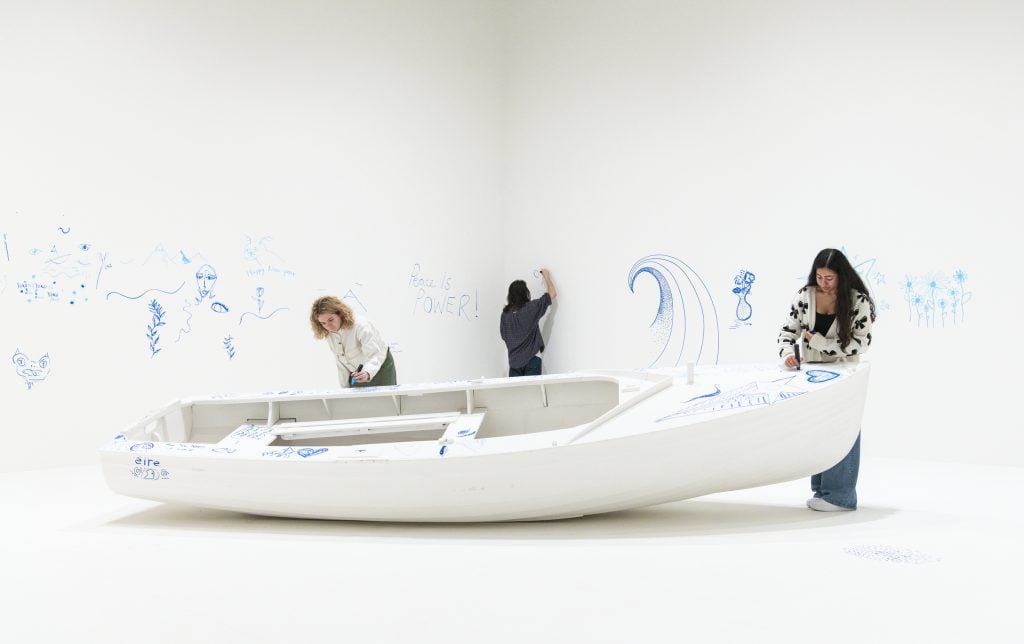Reviews
Yoko Ono’s Powerful Protest Art Has Taken Over the Tate. How Does It Meet With Our Present Moment?
The career-spanning exhibition shows how Ono was much more than headline fodder or her famous husband's collaborator.

When you ask most people what Yoko Ono has done, you’re likely to hear one of two things: that she sat in a hotel bed to promote peace alongside the late musician John Lennon, or that she singlehandedly broke up the Beatles. Or both. But the 91-year-old activist and widow of Lennon was always more than a headline or a muse to her famous husband, and this is well-evidenced at her highly anticipated retrospective at Tate Modern, called “Music of the Mind.”
In fact, Ono did all her best work before she met Lennon in 1966. That much is obvious throughout the nine rooms across the Blavatnik Building display. From her celebrated experimental film Cut Piece (1964), where Ono invited the audience at a performance in Kyoto to cut off parts of her robe until she was left only in her underwear and the straightest of faces, to the irreverent and silly Film No. 4 (Bottoms) (1966), a close-up shot of a pair of pert buttocks, Ono pushed the boundaries of embodied expression and collective participation to make odd, compelling, and original works of art. Yet it is much easier to say that about her early work than it is about her more recent attempts.
As a young girl evacuated from Tokyo during wartime, Ono found sanctuary in the constant presence of the sky. Sheltering in the countryside, Ono and her younger brother, Keisuke, would lie down in fields and gaze upwards, noting the traffic of clouds and the hues of blue and white. “That’s when I fell in love with the sky,” Ono said: “even when everything was falling apart around me, the sky was always there for me… I can never give up on life as long as the sky is there.”
Given that lying about and letting the world around her do its thing became a hallmark of her practice, Ono believed that this experience from childhood was her “first work of art.” Indeed, as a symbol of something that we all share, the sky seeps into much of Ono’s best work of the 1960s, including Sky TV (1966), a video work that features a recording of the sky over 24 hours. It grew out of a wish to haul the sky into the white cube of the gallery space and force modern technology into dialogue with the natural world.

Yoko Ono with Half-A-Room 1967 from HALF-A-WIND SHOW, Lisson Gallery, London, 1967. Photo © Clay Perry. © Yoko Ono
She also encouraged a direct discourse between the artwork and the view. The foundational piece Painting to See the Skies (1961), one of her “22 Instructions for Paintings,” Ono wrote down the straightforward instructions to realize her artwork: Drill two holes into a canvas. Hang it where you can see the sky. (Change the place of hanging. Try both the front and the rear windows, to see if the skies are different.)’ We are challenged to make the work in our minds, or note down the rules and realize it at home.
While I was visiting the gallery, an art critic in the next room was following instructions for Bag Piece (1964) on-site, gyrating in a black bag on the floor. “By being in a bag, you show the other side of you,” Ono said of this work: “which is nothing to do with race, nothing to do with sex, nothing to do with you know, age, actually.” By the end of the decade, Ono and Lennon invented Bagism based on this idea, a satire of all the prejudicial ‘isms’ that they believed falsely disconnected us from one another.

Yoko Ono, Sky TV 1966/2014. Courtesy the artist. Installation view courtesy of Hirshhorn Museum and Sculpture Garden. Photo © Cathy Carver. © Yoko Ono
After studying philosophy in Tokyo (she was the first woman student on her program at the elite Gakushūin University), Ono moved to New York in 1956 where she threw herself into the frenetic downtown scene of avant-garde musicians and artists. With her then-husband Toshi Ichiyanagi, she helped to inspire John Cage’s fascination with Zen and I-Ching principles to make music (and was instrumental in bringing Cage to the Sōgetsu Art Center in Japan). Ono co-programmed the legendary Chamber Street Loft Series at just 27 with La Monte Young, and staged important performances at Carnegie Recital Hall alongside Yvonne Rainer, Jonas Mekas, and David Tudor. She was an entrepreneurial impresario who helped cultivate forums for experimental programming with choreographers, musicians, and artists. She was a five-foot-one bridge between the avant-garde scenes in New York and Tokyo.
But everything changed when Ono met Lennon, at an exhibition of her work at the Indica Gallery in London. (Understandably for a Tate show there is an emphasis on “the London years,” from 1965 to 1971). So the story goes, the Beatle climbed the high ladder of Ono’s Ceiling Painting/Yes Painting (1966) to read the word YES through a magnifying glass. They fell in love. The rest is history. But that’s the problem. Ono abandoned the avant-garde for the spotlight and became an international spokesperson for the international peace movement. Commendable as that might be as activism, at times it made for some boring or sanctimonious art. For all the curators’ efforts to make Ono’s work seem relevant today, her practice has remained static since the 1970s, mired in the hippie utopianism of that moment.

Yoko Ono, Add Colour (Refugee Boat), 2016, at MAXXI Foundation. Photo © Musacchio, Ianniello & Pasqualini. © Yoko Ono
With that said, maybe there are other ways to read later works like Helmets / Pieces of Sky (2001) which features replicas of soldiers’ helmets filled with sky-printed jigsaw pieces, now suspended from the ceiling. “They are puzzle pieces,” curator Juliet Bingham tells me: “amidst the fragmentation of war and the destruction of home, embedded in these works is the conceptual idea that you would reform the world in the future.” Ono’s late works have a lot to do with breaking things apart and then asking the public to mend them.
Sometimes the public doesn’t do what it’s told. In the re-staging of Add Colour (Refugee Boat) (2019), in which we are asked to write our thoughts on an installation of white walls, floor, and a boat, visitors to Tate scrawled protracted arguments with others about various conflicts going on around the world. Is this a sign that we need Ono’s message of peace now more than ever? Or is rather that her version of an abstracted and universal message, divorced from current realities, offers no hope for art to change the world?
“It’s a message that remains consistently important,” says Bingham. “If more people can adhere of this idea of dreaming together, acknowledging difference, working towards resolution, her message remains relevant.’ I’d like to believe that.
“Music of the Mind,” is on view until on view until September 1, 2024, at Tate Modern.





